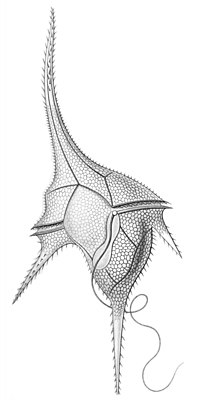
Photo from wikipedia
The toxic dinoflagellate Karenia mikimotoi has been well‐known for causing large‐scale and dense harmful algal blooms (HABs) in coastal waters worldwide and serious economic loss in aquaculture and fisheries and… Click to show full abstract
The toxic dinoflagellate Karenia mikimotoi has been well‐known for causing large‐scale and dense harmful algal blooms (HABs) in coastal waters worldwide and serious economic loss in aquaculture and fisheries and other adverse effects on marine ecosystems. Whether K. mikimotoi forms resting cysts has been a puzzling issue regarding to the mechanisms of bloom initiation and geographic expansion of this species. We provide morphological and molecular confirmation of sexually produced thin‐walled resting cysts by K. mikimotoi based on observations of laboratory cultures and their direct detection in marine sediments. Light and scanning electron microscopy evidences for sexual reproduction include attraction and pairing of gametes, gamete fusion, formation of planozygote and thin‐walled cyst, and the documentation of the thin‐walled cyst germination processes. Evidence for cysts in marine sediments was in three aspects: positive PCR detection of cysts using species‐specific primers in the DNA extracted from whole sediments; fluorescence in situ hybridization detection of cysts using FISH probes; and single‐cell PCR sequencing for cysts positively labeled with FISH probes. The existence of sexually produced, thin‐walled resting cysts by K. mikimotoi provides a possible mechanism accounting for the initiation of annually recurring blooms at certain regions and global expansion of the species during the past decades.
Journal Title: Journal of Phycology
Year Published: 2019
Link to full text (if available)
Share on Social Media: Sign Up to like & get
recommendations!